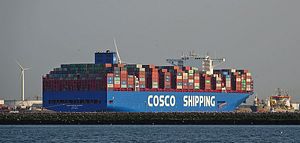As of November 6, Chinese traders will be barred from purchasing at least seven different categories of Australian commodities. This is the latest escalation of trade tensions between China and Australia and suggests a further souring of the overall relationship. In recent weeks a series of Australian industries – from barley, beef, coal, and cotton to lobster, timber, and wine – have been the target of anti-subsidy and anti-dumping measures or had deliveries delayed. While Beijing has cited quality issues with certain Australian goods, the escalation of trade restrictions is likely retaliation by China for political statements and positions the Australian government has taken this year.
In April, Australian Prime Minister Scott Morrison called for an independent inquiry into the origins of COVID-19, which was first detected in China. Morrison later reiterated the need for such a probe in his speech before the U.N. General Assembly in September. Meanwhile, media ties between the two countries have also been hit, with journalists facing expulsion and investigation. Canberra has also condemned Beijing’s treatment of Muslim Uyghurs in Xinjiang, as well as the Hong Kong national security law and the curtailing of freedoms in the special administrative region.
While 2020 appears to have accelerated the deterioration of China-Australia relations, two-way ties were already on the decline.
Australia, under the Morrison government, was the first country to ban Chinese tech giant Huawei from developing its 5G network. Separately, Chinese political influence in the country has also been a hotly debated topic, a debate that was only reinvigorated when a self-identified Chinese intelligence operative sought protection in Australia last November. Ten percent of Australia’s university places are occupied by Chinese international students and Beijing backs around a dozen Confucius Institutes at Australian public universities. Proposed legislation in Australia designed to counter foreign interference and influence would empower the federal government to review foreign arrangements with Australian public entities, including universities.
In addition to mounting national security concerns, overall perceptions of China have taken a significant turn for the worse in Australia. In a 2020 Pew Global Attitudes poll, 81 percent of Australian respondents held unfavorable views of China, up from 57 percent in 2019, and 32 percent in 2017. The same survey project found that Australians’ negative evaluations of and lack of confidence in Chinese leader Xi Jinping also grew stronger in the past several years, peaking in 2020 at 79 percent.
Despite the plummeting of favorable views of China among Australians, there is no denying the importance of the economic ties between the two countries. Two-way trade amounted to A$240 billion between July 2019 and June 2020. China had been a major investor in Australia, but inbound investments have significantly dipped over the past several years, totaling A$2.5 billion in 2019 after peaking in 2016 at A$15.8 billion. Still, China ranks first among Australia’s trade partners; it is the top destination for approximately a third of Australia’s exports and is the source of nearly a quarter of the country’s imports. Chinese visitors have also been a boon for the Australian tourism industry, overtaking New Zealand as the top source of short-term arrivals in 2017. Tourism numbers in general, and from China, have shrunk.
Experts have expressed alarm at the plunge in two-way ties. “The Australia-China relationship is unravelling at a pace that could not have been contemplated just six months ago,” writes James Laurenceson, director and professor at the Australia-China Relations Institute (UTS), University of Technology Sydney. Others, including Ashley Townshend, have emphasized that while the coercive tools being employed by China are not new, the novelty lies in their intensity and explicit use. “Although China’s standoff with Australia draws from a familiar playbook, it marks an escalation on past behavior insofar as the intensity, directness, and combination of disinformation and economic coercion are concerned. China may have overplayed its hand on this occasion, but the standoff is nonetheless complicating Australian policy and offers important lessons for how Canberra, Washington, and other powers should deal with similar tactics in the future,” writes Townshend.
More blatant Chinese coercion against Australia appears to have forced politicians to reconsider their embrace of Beijing. As University of Sydney’s Salvatore Babones writes, “Now that China has turned itself into an international pariah, politicians in democratic countries will be very reluctant to be photographed shaking hands in Beijing, and the Chinese gravy train that has fattened so many Western wallets will grind to a halt.”
And yet, in the face of the complementarity between the Australian and Chinese economies and in pursuit of post-coronavirus recovery, it remains to be seen how Australian exporters will adapt. How long will Beijing be committed to punishing Australia’s economy and to what extent will Canberra be able to withstand the pressure?
































